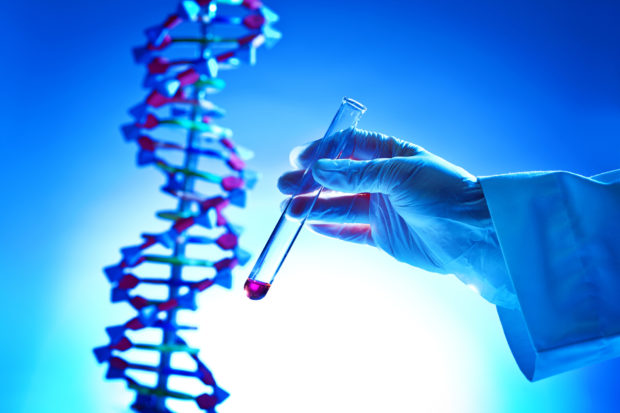DNA might replace barcodes to tag art, voter ballots — study

Image: YinYang/IStock.com via AFP Relaxnews
Easy-to-remove barcodes and QR codes used to tag everything from T-shirts to car engines may soon be replaced by a tagging system based on DNA and invisible to the naked eye, scientists said Thursday.
The DNA-based system could help anti-forgery efforts, according to researchers who said thieves struggle to find or tamper with a transparent splash of DNA on valuable or vulnerable items, such as election ballots, works of art, or secret documents.
In an article published in Nature Communications, researchers at the University of Washington and Microsoft said that the molecular tagging system, called Porcupine, is — unlike most alternatives — cost-effective.
“Using DNA for tagging objects has been out of reach in the past because it is expensive and time consuming to write and read, and requires expensive lab equipment,” lead author and a Washington University doctoral student Katie Doroschak told AFP.
Porcupine gets around this by prefabricating fragments of DNA that users can mix together arbitrarily to create new tags, the researchers said.
“Instead of radio waves or printed lines, the Porcupine tagging scheme relies on a set of distinct DNA strands called molecular bits, or ‘molbits’ for short,” the University of Washington said in a statement.
“To encode an ID, we pair each digital bit with a molbit,” explained Doroschak. “If the digital bit is 1, we add its molbit to the tag, and if it’s 0 we leave it out. Then we can dry it until it’s ready to be decoded later.”
Once the item has been tagged, it can then be shipped or stored.
When someone wants to read the tag, water is added to rehydrate the molecular tag, which is read by a nanopore sequencer, a DNA-reading device smaller than an iPhone.
‘Undetectable by sight’
“The name Porcupine comes from a play on words (PORE-cupine, as in nanopore) and the idea that porcupines can ‘tag’ objects, and critters that dare to get too close,” the lead author said.
Unlike existing systems to tag objects, DNA tags are undetectable by sight or touch, senior author Jeff Nivala said in a press release from Washington University.
“Practically speaking, this means they are difficult to tamper with.
“You could envision molecular tagging being used to track voters’ ballots and prevent tampering in future elections,” said Nivala.
The DNA-based technology might also be able to tag items that would be difficult to fix a barcode to.
“It is not possible to tag cotton or other fibres with conventional methods like RFID tags and QR codes, but a liquid DNA-based tag could be used as a mist,” said Doroschak.
“This could be helpful for supply chains where origin tracing is important to retain the value of the product,” she added. JB
RELATED STORIES:
Carrying genes linked to dementia could increase the risk of severe COVID-19, says study
New study links inflammatory bowel disease to increased risk of dementia